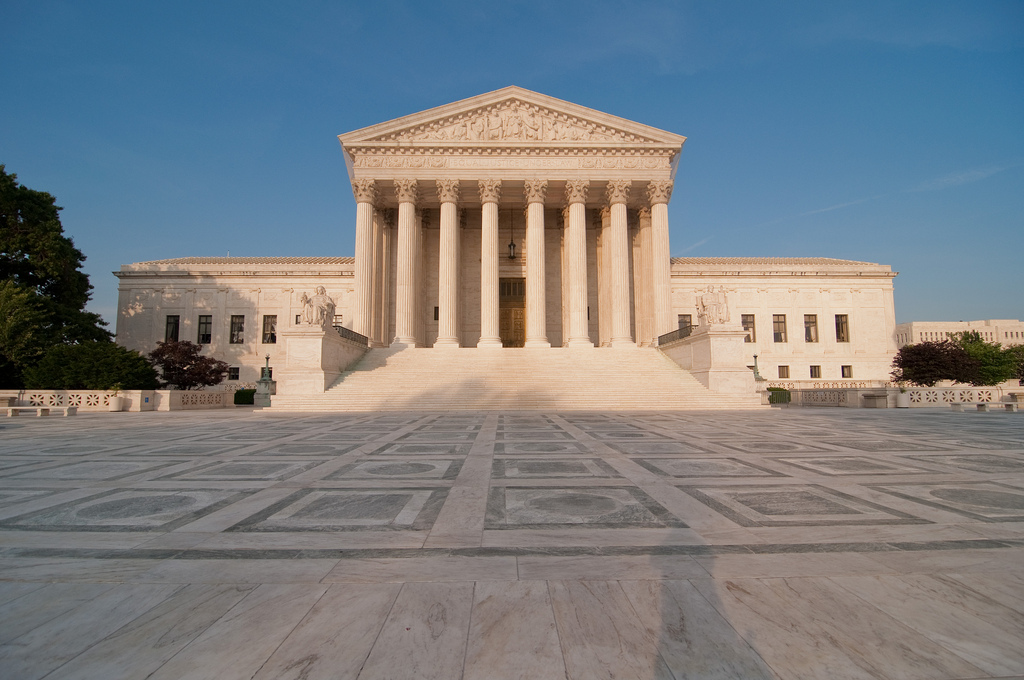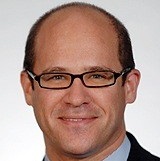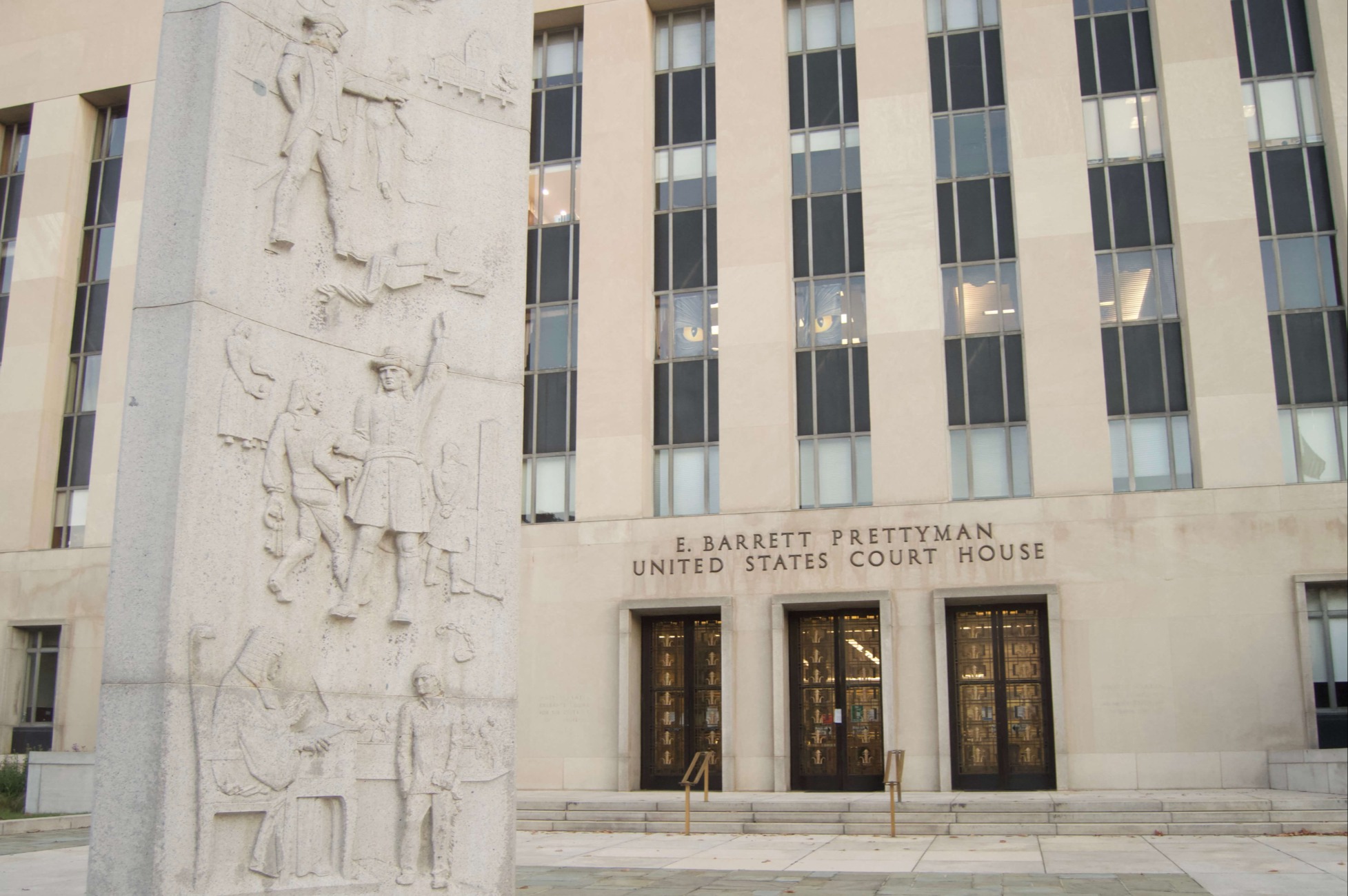Four Thoughts on the Briefing in Carpenter v. United States
The Supreme Court will hear argument on Nov. 29th in Carpenter v. United States, a case on whether the Fourth Amendment applies to government collection of historical cell-site records. I wrote an amicus brief in the case that explains my basic views on it. I have four additional thoughts on the briefing, however, so I figured I would offer them here.

Published by The Lawfare Institute
in Cooperation With

The Supreme Court will hear argument on Nov. 29th in Carpenter v. United States, a case on whether the Fourth Amendment applies to government collection of historical cell-site records. I wrote an amicus brief in the case that explains my basic views on it. I have four additional thoughts on the briefing, however, so I figured I would offer them here.
(1) The Role of the Mosaic Theory. The most striking aspect of the briefing in the case is that Carpenter goes all-in on the mosaic theory of the Fourth Amendment. He concedes that short-term monitoring of historical cell-site records -- or rather, collection of historical cell-site records covering a short period of time -- is not a search. In his view, collection of cell-site records becomes a search only when the time period of the collection is "longer term."
I've written, both in an article and in Section III of my brief, about the enormous headaches that such a mosaic approach would create. Notably, Carpenter avoids taking a position on how to implement this theory until the reply brief. In the reply brief, he finally takes a view on just the starting question -- how long is longer term -- by offering a 24-hour standard.
I'll explain below why, even if you accept the basic idea of a mosaic theory, a 24-hour line doesn't make much sense. But I suppose one must give Carpenter's lawyers at least a little credit for starting with a number. I say that because one of the fascinating aspects of the mosaic theory is that its proponents generally go to great lengths to avoid explaining how they would implement it.
After having debated the mosaic idea in academic circles, I have a guess about why that is. Once you start to answer all the questions that implementing the mosaic approach requires you to answer, it quickly becomes clear that you're really drafting a statute. It would be sort of a Miranda on steroids: You'd need to make a few dozen essentially arbitrary line-drawing calls. You can do that. But you'd look a bit silly. It's hard to announce all of those lines without making clear that you're more legislating than interpreting anything in the Constitution. The best way to avoid that uncomfortable situation for mosaic theory fans, I gather, is to decline to give guidance on how you might implement it.
Carpenter suggests in his brief that the numerical line-drawing a mosaic theory would require is no big deal. "The Court has not hesitated," Carpenter writes, "to set bright-line durational limits" in criminal procedure. I think that's false. Let's focus on Fourth Amendment law. The Court often encounters requests and opportunities to impose bright-line durational limits in Fourth Amendment law. How long can a traffic stop go on? How long can a Terry stop go? How long can a search incident to arrest continue? With only one possible exception, the Court has always refused to impose bright-line durational limits.
The possible exception is County of Riverside v. McLaughlin, 500 U.S. 44 (1991). But McLaughlin's message is mixed on this score. Here's the context. In 1985, in Gerstein v. Pugh, the Court had held that a person arrested without a warrant must get a "timely" hearing into whether probable cause justified the arrest. How timely? Gerstein didn't say. The hearing had to be "prompt." But that created a lot of chaos. There are millions of arrests in the United States every year: What counts as a "prompt" hearing? The circuits quickly split on the question, and the Court took McLaughlin to clarify what exactly counts as "prompt."
Even then, Justice O'Connor's opinion in McLaughlin did not eagerly announce the bright-line rule Carpenter suggests. If you read McLaughlin, it says that the Court "hesitate[s]" to announce a specific time limit, but that in order to give legislatures "confidence that they fall within constitutional bounds," a good ballpark starting point is a 48-hour window. A 48-hour time window will be sufficient "as a general matter," the opinion says, unless the determination was delayed "unreasonably," construed in light of the need for "a substantial degree of flexibility," with the passing of 48 hours triggering a burden on the government to show "a bona fide emergency" or "extraordinary circumstance." That doesn't sound like the Court embracing a bright-line rule to me. And remember, the Court only took that step after being confronted with the chaos caused by its earlier standard, "prompt," announced a few years earlier in Gerstein.
(2) Carpenter and Equilibrium-Adjustment. Another reaction I had on reading Carpenter's brief was some amount of pride. This one might require explanation. I think Carpenter's position is misguided, but his basic theory is the most direct and clear argument for equilibrium-adjustment that I have seen articulated in a legal brief. As some readers know, I have argued that the Court does and should update Fourth Amendment rules to maintain the balance of government power as technology changes. The idea that is that some technological shifts so transform the level of government investigative power (whether expanding it or restricting it) that they justify new rules to restore the prior level of government power. I have called this "equilibrium-adjustment," as the court adjusts the legal rule to restore the prior equilibrium.
With that background, consider how Carpenter frames his constitutional claim:
As new technology has dramatically lowered the cost of government surveillance and increased the government’s access to private information, this Court has stressed that the reasonable-expectation-of-privacy inquiry must “assur[e] preservation of that degree of privacy against government that existed” prior to the advent of the new technology in question. United States v. Jones, 565 U.S. 400, 406 (Scalia, J.) (alteration in original)
This is a bit of a fudge, as the quote from Jones, in turn quoting Kyllo, was actually that "we must assur[e] preservation of that degree of privacy against government that existed when the Fourth Amendment was adopted" (emphasis added). The sentence was making an originalist claim, looking back to the 18th century, not making an equilibrium-adjustment claim, looking back to before the technology became widespread. Still, it's a fudge that makes the equilibrium-adjustment argument particularly clear. As I wrote back in 2012, I think the mosaic theory is the wrong way to engage in equilibrium-adjustment. But I personally liked how clearly Carpenter relied on equilibrium-adjustment in his brief.
(3) Locking in ignorance and the black box problem. Carpenter also relies heavily on what I have called the "probabilistic" model of the Fourth Amendment. This is the idea -- suggested in some cases and strongly rejected in others -- that a reasonable expectation of privacy is a matter of actual societal expectations. As I explained in my amicus brief, Carpenter is barking up the wrong tree with this argument: This is a case about manifesting subjective expectations of privacy, not reasonable expectations of privacy, so arguments about what makes an expectation of privacy "reasonable" should be irrelevant. (Or as I put it in 2009, third party doctrine cases are about consent -- when you give up your privacy rights by disclosure -- rather than what spaces are protected. That's the idea behind the subjective expectation of privacy test.)
Still, even if one tries to view the third-party doctrine as a "reasonable expectation of privacy" problem, the probabilistic model seems particularly ill-suited to regulate access to third-party business records. First you run into the problem of identifying exactly what expectation matters. If you're going to apply the probabilistic model, you need to define what is the thing people expect that has some kind of constitutional relevance. The probabilistic model has previously been limited to in-person social interactions, like a person's expectations of whether his bags will be touched by other passengers when rising the bus. In that setting, you can say what people expect others to do in the interactions they have. And the answer has at least a plausible link to the normative considerations driving Fourth Amendment search doctrine. If you're interacting with someone, your expectations about what they will do give you a sense of which of your spaces are effectively open to others and which are effectively closed to them.
That plausibility is lost when you try to apply the probabilistic model to the very different problem of government access to third party records. First, you have to ask: Expectations of what? You're no longer talking about an in-person interaction, where the expectation is of the visible act of a present person. So you need to wonder, is the issue expectations that the records are created? Expectations that the records are created and stored? Expectations that the government is trying to get access to them? Expectations that the government has sufficient cause to get them under the Stored Communications Act? Something else? There's no obvious answer, as the probabilistic model just hasn't been used to answer that kind of question.
Further, picking each of these questions as the correct one itself raises big problems. Let's say you apply the probabilistic model, and you select the relevant expectation as being that the records are created are stored. If people know how cellphones work, they will not expect the selected kind of privacy. They will know that delivering a cell phone call requires cell towers, and that providers typically create and store their records for business reasons. On the other hand, if people don't know how cellphones work, they might expect the selected kind of privacy out of ignorance.
That creates a difficulty I have called the "black box" problem. New technologies are often like black boxes to their users. When people start using them, they typically have no idea how the technologies work. They just work like magic. Once you learn how the technology works, though, you no longer see the technology as a black box. Instead, you think of it based on how it actually works. If you're going to apply the probabilistic model based on understandings of how technology works, however, you need to lock in today's understanding. That means you may need to constitutionalize widespread ignorance of today that can be gone tomorrow.
Here's a hypo to ponder. Imagine the Court applies the probabilistic model to the question of whether cell-site records are collected and retained. Say the Court concludes that most people in 2017 don't know how cellphones work . If they don't know the records will be created and stored, the reasoning runs, they have a reasonable expectation of privacy in the collection of longer-term periods of the records. Now imagine the announcement of the opinion will get lots of press attention, thus informing people of how cellphones work and that cell-site records are created and stored. That creates a puzzle. If you apply the probabilistic model in this way, announcing the Carpenter decision may make the Carpenter decision wrong. People would have the knowledge they previously lacked. As a result, the decision's existence could render itself incorrect. It's like importing Heisenberg's uncertainty principle from quantum physics into constitutional law.
The answer, it seems to me, is to recognize that Carpenter and the third-party doctrine cases are not about the reasonable expectation of privacy test at all. And if the Court does want to squeeze the case into the reasonable expectation of privacy model, it should avoid the probabilistic model in doing so.
(4) Carpenter's proposed 24-hour rule. Carpenter's reply brief suggests that the first step in implementing the mosaic theory -- figuring out what counts as "longer term" -- should begin with a 24-hour rule. Here's the relevant passage from the reply brief:
Before the advent of CSLI and GPS technology, law enforcement could rarely, if ever, track a person’s historical movements on a minute-by-minute basis for a period of time covering more than a few hours. See Petr. Br. 18-19, 31. Thus, if the government insists on specifying “how much is too much” when it comes to CSLI, a bright-line rule allowing law enforcement agents to request no more than 24 hours of an individual’s historical CSLI without triggering the warrant requirement would give the government every benefit of the doubt in practical terms and the certainty it claims to need.
This appears to be an argument based on equilibrium-adjustment. Location tracking is new, the argument runs, so we pick a time window for the mosaic that makes location tracking beyond what we used to have a "search."
Even accepting that version of the mosaic theory, however, a 24-hour window strikes me as deeply flawed.
The first problem is that this case doe not appear to involve "track[ing] a person's historical movements on a minute-by-minute basis." This case involves records of what tower was used to send and deliver phone calls. Whenever a phone call was made to or from Carpenter's phone, a record of what cell tower was used to deliver it was generated. The cell tower could say roughly what neighborhood the phone was in -- according to the record, within half a mile to two miles -- but it gave no more detailed information than that.
According to the government's brief, further, the records were created only when phone calls were actually made and received. See Resp. Br. at 6 ("The records showed the towers petitioner’s phone connected to when it made and received calls, but did not contain any cell-site information for text messages or for times when petitioner’s phone was turned on but was not being used to connect a call.") A 2010 Pew study says that the average adult cellphone owner in the United States makes or receives five cell phone calls per day. This means that for a typical user, collecting historical cell-site records would generate only a handful of general location records (within a mile or so) per day.
This seems pretty far from "track[ing] a person's historical movements on a minute-by-minute basis."
Granted, there are lots of variables in play. Based on Carpenter's brief, it seems like he was a very heavy cell phone user. Carpenter says (at page 8) that his records contained an average of 101 location points per day, which I take to be an order of magnitude higher than typical cell phone use. So for purposes of the Fourth Amendment, do you treat his records as special? Do you follow typical use, or what happens to have been revealed in this case? And what about the different decisions of different cell phone providers to keep different records and store them for different periods of time? That would have a big influence on how many records are collected, too.
Second, note how Carpenter's approach hinges on blending CSLI and GPS collection together. I don't think that works. Carpenter compares what the government could access about historical location between two eras in time: (a) the era before CSLI and GPS records and (b) the era after CSLI and GPS records. But this seems strange. Access to historical CSLI and access to GPS records are different. My understanding is that historical GPS records ordinarily don't exist. GPS records are collectable real-time pursuant to a warrant. But such records are not created and stored in the ordinary course of business and are therefore not available on a historical basis like CSLI records. That's why the government tries to collect historical location records by obtaining very imprecise historical CSLI records instead of extremely precise GPS records. The latter doesn't exist to collect, so the government can't collect them.
Viewed in that light, Carpenter's proposed 24-hour clock based on equilibrium-adjustment seems puzzling. It tries to use the government's ability to get GPS location records in real-time pursuant to a warrant to justify the imposition of a 24-hour mosaic clock on search doctrine on warrantless historical collection of a different technology. Maybe the oral argument will make the basis for that move clearer. And maybe I am misunderstanding the technology. But at least to me, at this point, it doesn't seem to fit together.





